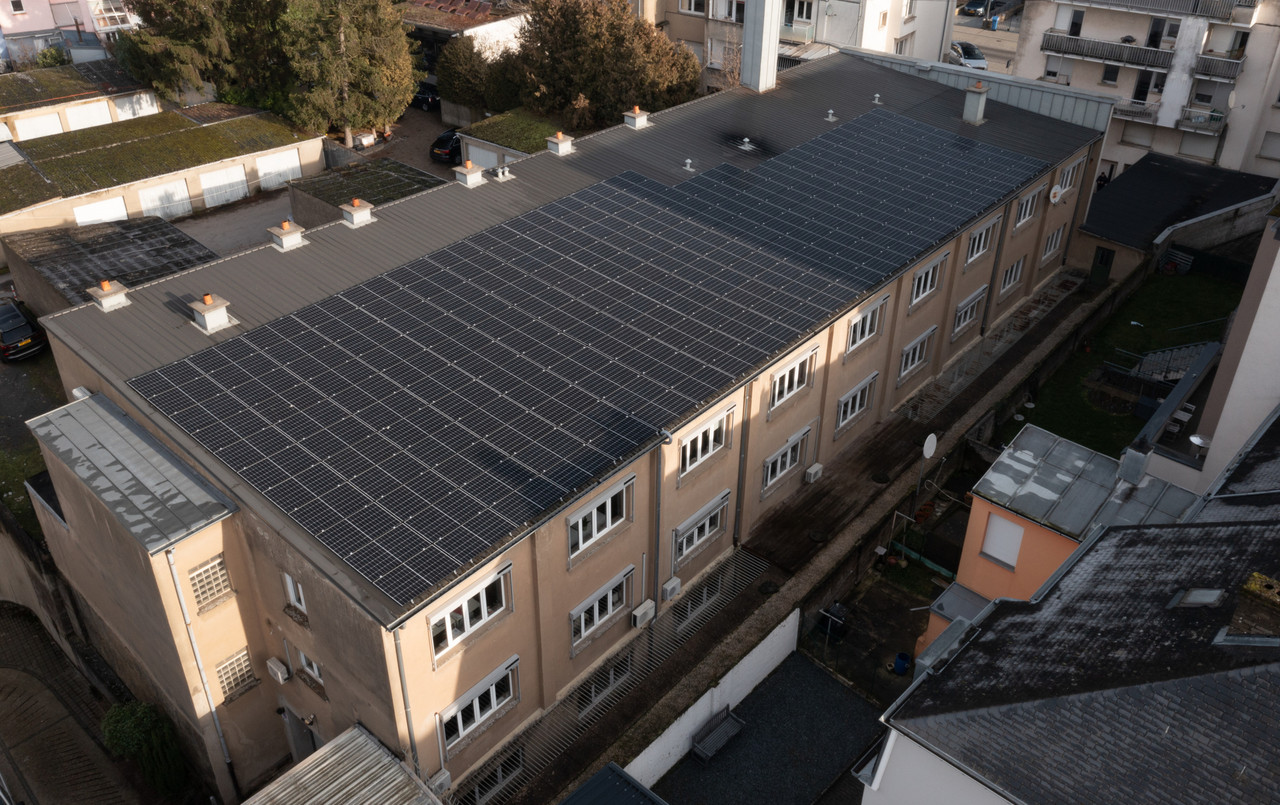The solar installation brings the company another step forward. Since September 2021, its magazines are being printed in a carbon-neutral way. In addition, by adapting the format of its magazines a few weeks ago and changing the paper used, the company reduced the weight of the magazines by 43% for Paperjam and 30% for Delano.
It's an easy thing for companies to do, so don't hesitate.
“We approached the family-owners of our headquarters building in Bonnevoie and proposed this ‘Rent Your Roof’ solution. For some time now, as part of our ‘net zero’ strategy, we have been looking to produce green electricity, but we are tenants. Thanks to this solution, the 350m2 of our roof are used to contribute, albeit modestly, to Luxembourg’s climate objectives. It’s an easy thing for companies to do, so don’t hesitate,” said , CEO of Maison Moderne.
The surface area “with its sloping roof and sunshine will have a production capacity greater than a 1,000m2 installation on a flat roof,” said Xavier Struyven, operational director of Schuler Renewable Energies (SER) within the Schuler group, which has developed emblematic buildings such as the or Horizon in Strassen.
Rent-your-roof, a win-win agreement
But SER also accepts smaller projects depending on certain parameters. “One installation is not like another in photovoltaics. Normally below 1,000m2, it is complicated in terms of profitability. Except in certain cases, such as recently with the roof of the building that houses the offices of Maison Moderne in Bonnevoie. […] This shows that every project is different,” said Struyven.
“We are looking for large roofs to install our photovoltaic installations on. In return, we pay a rent to the owner of the building,” he explains.
Read also
The company offers a ‘rent your roof’ system. This system is targeted at companies only, and aims at a win-win agreement. SER takes care of the cost of the feasibility study, static studies, electrical studies, installation, administrative authorisations and maintenance. Depending on the project, SER, in agreement with the owner, pays rent for the occupation of the roof. On its side, SER is remunerated by re-injecting the energy into the grid, benefitting from a price guaranteed by the state for 15 years. After this period, the installation belongs to the owner of the roof. The owner can also buy it back early.
Although all installations are different, SER favours installations on buildings with a roof surface of at least 1,000m2, as is the case on the roof of the Autopolis dealership, which has 638 panels and three inverters for a production of 178,000 kWh/year. This is equivalent to the annual consumption of 50 households.
Target 1,000 kilowatt-peak in 2023
Currently, Schuler Renewable Energies has installed around 3
50 kilowatt-peaks in Luxembourg. Kilowatt-peaks is the unit used to measure the energy production of solar panels.
“Considering the consumption of a household at 3,700 kWh per year, this is equivalent to the consumption of 200 households per year,” said Struyven. SER’s objective is to reach 1,000 kilowatt-peaks installed by the end of the year.
This story was first published in French on Paperjam. It has been translated and edited for Delano.

